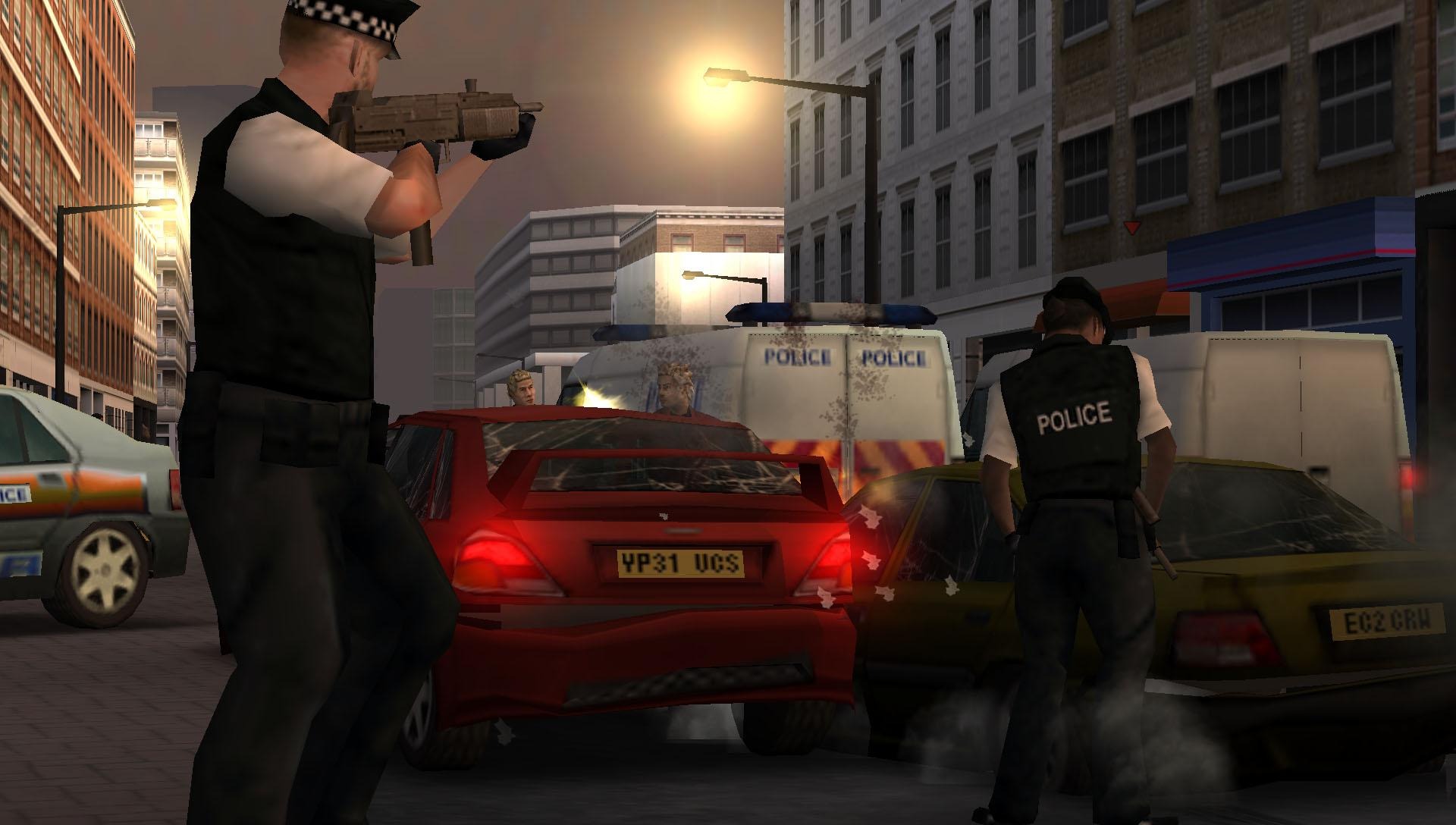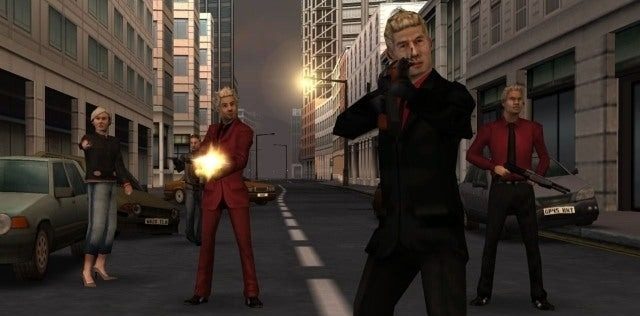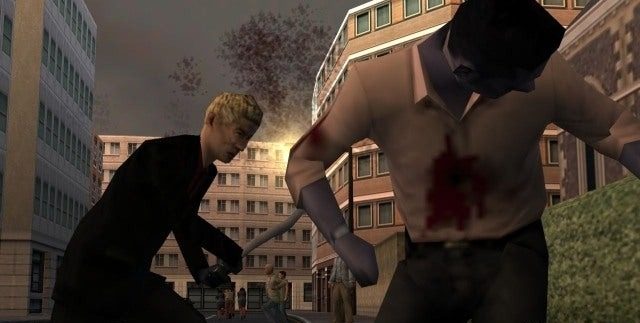Praising the game and highlighting its strengths and weaknesses is simple, but completing it from beginning to end requires more effort. The issue with Gangs of London cannot be attributed to just one or two factors, but rather a lack of cohesion. I spent hours in front of my PSP, attempting to enjoy a game that struggled to satisfy, ultimately failing in every aspect. But what caused the middle game to fall short compared to the rest?

In order to comprehend the source of the issue, we must assess the concept itself. Gangs of London is not simply a GTA clone, but it often strives to be one. If you have played The Getaway or its sequel, Black Monday, you may be familiar with the game’s setting. The London criminal underworld is a brutal entity, with more conflicts than a typical trip to the local supermarket’s express lane, and it appears that everyone is vying to become the most dominant and feared Cockney gang in the heart of the city. The triads, of course, maintain their traditional culture and secrecy, which only adds to their intimidating reputation.
During each mission, you have the option to either walk or drive around the streets of London in a car while completing tasks for the crime syndicate of your choice. These syndicates include the EC2 team, Morris Kane Company, Talwar brothers, Zakharov organization, and Water Dragon Triad. While these choices do not significantly alter the plot, they do add a different element to the game. Unfortunately, the following 8 hours were extremely underwhelming, to the point where my PSP almost became a footrest. The gameplay is dull and feels incredibly outdated.
Gangs of London sets itself apart from The Getaway by allowing players to control a team of criminals instead of just one individual. This team can be easily switched between with the press of a button, and other members can provide support, follow the player, or stay put, following the usual genre conventions. An appreciated feature, often overlooked on portable devices, is the option to give individual orders to each team member. While this may add complexity to the management aspect, it is executed quite effectively.
As you progress through the storyline, you will encounter the same tasks, albeit with different names and slight variations. The highly sought-after feature of leniency, commonly desired in games of this type, does not provide a significant advantage. Ultimately, it all comes down to one simple truth – it’s just not engaging enough – and this can be a major deterrent for impulsive buyers.

Gangs of London is attempting to utilize the London setting to their advantage, however the lack of commitment in the dialogue and the excessive use of “colorful” language gives off the impression of a game trying to mimic its origins. While I support uncensored content in video games, it becomes problematic when it is used in place of a well-developed storyline. Unfortunately, the issues with the game’s presentation extend beyond just the audio. As the most advanced handheld console in the world, I expect more from my PSP than uninteresting textures, clunky character designs, and occasional frame rate issues. It may not be the worst looking game for PSP, but it is disappointingly simplistic.
In order to maintain one’s reputation, a collection of small games were recorded, with the intention of replicating the games commonly played by Londoners in their home country. It is difficult to determine if this was simply a response to the lackluster main game, but the majority of these mini-games are quite enjoyable. While they may not reach the level of excellence seen in games like WarioWare, they do bring a smile to one’s face upon returning home from work to find a package waiting. Darts and billiards are popular choices for mindless entertainment, but this particular selection focuses solely on activities involving risk. It offers a London-centric approach to game mechanics and serves as a strong addition to the overall game. If it were possible to play online, it could potentially be a reason to disregard the rest of the game.
Regrettably, I am unable to overlook the Gangs of London for as long as I desire. If you begin a PSP and bypass the basic storyline of mini-games, it is evident that there is an issue. Gangs of London is an unsuccessful attempt at a game that had the potential to be much better. Hopefully, Sony will thoroughly evaluate the series before the inevitable sequel emerges, with any luck, not in a disgusting manner.
Poor little guy. My PSP is only a little over a month old, and its most intense workout to date was when I momentarily lost my temper during a siphon filter. I apologize, my friend, I am not finished yet. I will not be able to defeat the final demon until I collect all the Gold Rings, and until that day arrives, the never-ending torment of ghosts and absolute goblins will persist. Yes, as you may have heard, this game is amusing, at times brutal, challenging, but if you possess enough patience (or a little Valium on hand), you will persevere, for there is nothing more satisfying than conquering the seemingly unbeatable. However, I must confess, there have been a few instances where my shiny white laptop was nearly transformed into an expensive new wall decoration or tastefully adorned with a hammer.
Capcom’s fourth installment of its popular series may not bring any groundbreaking changes, but for retro enthusiasts who reject the idea of 3D (much like those who once believed the Earth was flat), there is still plenty to enjoy. The beloved Sir Arthur returns, donning his iconic underpants once again. While the opening scene of the princess’s abduction by an evil demon is presented in 3D, the main gameplay remains in classic 2D style. The only modern elements are the eerie orchestral soundtrack (replacing the 16-bit beeps) and subtle use of 3D effects for added depth and shadows, similar to games like Castlevania: Dawn of Sorrow, Sonic Rush, and New Super Mario Bros. on the DS.
When beginning in the Evil Forest, your objective is to lead Sir Arthur through the scrolling levels, each filled with platform obstacles and numerous enemies determined to prevent your entry into the demon realm and rescue a defenseless girl. This is a testament to Capcom’s dedication to preserving the essence of the franchise, which is evident in their decision to keep the basic formula unchanged. However, this strong commitment to the retro game has its drawbacks. While it is undoubtedly charming to embark on another thrilling, vibrant, and downright exciting Ghosts ‘N Goblins adventure, there are moments when the gameplay becomes routine rather than the pure joy it should be. Despite Capcom’s promotion of Arthur’s new abilities such as double jumping, jumping, and edge grabbing, he remains just as difficult to control as before. Jumping poses a particular challenge as our hero is unable to maneuver in the air, and it often takes numerous frustrating attempts to conquer the challenging levels. The presence of hordes of undead enemies who constantly attack you only adds to the difficulty. Planning a double jump at the right time is no easy feat, especially when faced with enemies that can fly through walls and platforms. While it may make sense for Arthur to now be able to climb, the fact that he can only do so horizontally and not diagonally is somewhat absurd. This is far from an ideal situation, especially since your attackers do not face the same limitations. Perhaps it is the weight of Arthur’s iron protective suit that hinders his movements, but he will not receive much sympathy from you.

When it comes to armor, the protagonist in the game begins with a basic metal coating, but can acquire additional layers along the journey. However, each defeated enemy will strip away a layer until Arthur, in homage to previous games, is left with only close-range combat abilities. The game offers three difficulty levels (easy, normal, and hard), but only the most dedicated players will be able to conquer the lowest setting, which grants extra lives and halfway respawn points. Even among beginners, Ultimate Ghosts ‘N Goblins remains one of the most challenging games in recent years and often resembles a 2D version of another Capcom game, Devil May Cry 3. The storyline is unforgiving and frequently relies on blind leaps of faith in new areas, which are later revealed to be necessary in order to avoid constant repetition of the same difficult sections on the screen. Additionally, if you manage to reach the end, there is a frustrating twist that will require you to use the string keys collected throughout the game to revisit certain levels (pro tip: whenever you see a large golden ring, try to grab it).

